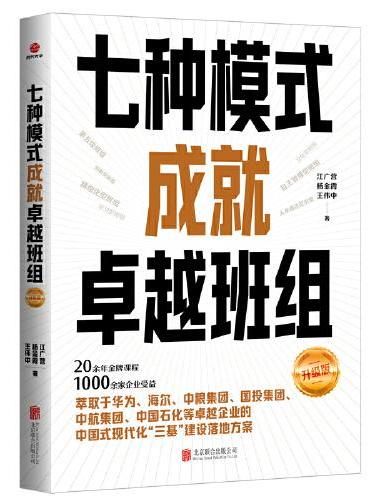新書推薦:

《
金手铐(讲述海外留学群体面临的困境与挣扎、收获与失去)
》
售價:NT$
347.0

《
五谷杂粮养全家 正版书籍养生配方大全饮食健康营养食品药膳食谱养生食疗杂粮搭配减糖饮食书百病食疗家庭中医养生药膳入门书籍
》
售價:NT$
254.0

《
七种模式成就卓越班组:升级版
》
售價:NT$
296.0

《
主动出击:20世纪早期英国的科学普及(看英国科普黄金时代的科学家如何担当科普主力,打造科学共识!)
》
售價:NT$
403.0

《
太极拳套路完全图解 陈氏56式 杨氏24式和普及48式 精编口袋版
》
售價:NT$
152.0

《
2+20:私募股权为什么能长期战胜市场
》
售價:NT$
403.0

《
经典秩序的重构:廖平的世界观与经学之路(探究廖平经学思想,以新视角理解中国传统学术在西学冲击下的转型)
》
售價:NT$
454.0

《
你喜欢勃拉姆斯吗……
》
售價:NT$
245.0
|
| 內容簡介: |
数值线性代数(又称矩阵计算)是科学计算以及工程计算等领域中的一个核心研究课题。科学计算以及工程计算中的大多数问题*终可转化归结为矩阵计算中的某类问题。金小庆、魏益民、赵志编*的《数值线性代数及其应用第2版英文版精》用简练的英语介绍了该课程的基本知识,同时介绍了作者近年来取得的*新研究成果。
本书的第二版共由十章内容构成。其中主要的内容包括求解线性系统的高斯消去法、经典迭代算法和克雷洛夫子空间算法;高斯消去法的舍入误差分析;线性系统的扰动分析;求解线性 *小二乘问题的正交分解算法;以及求解特征值问题的一些经典算法。本书*后两章介绍了常微分方程、时滞微分方程以及分数阶扩散方程的数值求解中预处理技术的应用的相关研究成果。
本书可以作为综合大学、理工科大学或高等师范学校的计算数学、应用数学和工程计算等专业的本科生教材或教学参考书,也可供从事科学与工程计算的科技人员参考。本书是英文教材,从而可以试用于大学的双语教学。
|
| 目錄:
|
Preface
Chapter 1 Introduction
1.1 Basic symbols
1.2 Basic problems in NLA
1.3 Why shall we study numerical methods?
1.4 Matrix factorizations decompositions
1.5 Perturbation and error analysis
1.6 Operation cost and convergence rate
Exercises
Chapter 2 Gaussian Elimination
2.1 Triangular linear systems and L U factorization
2.1.1 Triangular linear systems
2.1.2 Gaussian transform matrix
2.1.3 Computation of LU factorization
2.2 LU factorization with pivoting
2.3 Cholesky factorization
Exercises
Chapter 3 Perturbation and Error Analysis
3.1 Vector and matrix norms
3.1.1 Vector norms
3.1.2 Matrix norms
3.2 Perturbation analysis for linear systems
3.3 Error analysis on floating point arithmetic
3.4 Error analysis on partial pivoting
Exercises
Chapter 4 Least Squares Problems
4.1 Least squares problems
4.2 Orthogonal transformations
4.2.1 Householder transformation
4.2.2 Givens rotation
4.3 QR decomposition
Exercises
Chapter 5 Classical Iterative Methods
5.1 Jacobi and Gauss-Seidel method
5.1.1 Jacobi method
5.1.2 Gauss-Seidel method
5.2 Convergence analysis
5.2.1 Convergence theorems
5.2.2 Sufficient conditions for convergence
5.3 Convergence rate
5.4 SOR method
5.4.1 Iterative form
5.4.2 Convergence criteria
5.4.3 Optimal w in SOR iteration
Exercises
Chapter 6 Krylov Subspace Methods
6.1 Steepest descent method
6.2 Conjugate gradient method
6.2.1 Conjugate gradient method
6.2.2 Basic properties
6.3 Practical CG method and convergence analysis
6.3.1 Practical CG method
6.3.2 Convergence analysis
6.4 Preconditioning
6.5 GMRES method
6.5.1 Basic properties of GMRES method
6.5.2 Implementation of GMRES method
Exercises
Chapter 7 Nonsymmetric Eigenvalue Problems
7.1 Basic properties
7.2 Power method
7.3 Inverse power method
7.4 QR method
7.5 Real version of QR algorithm
7.5.1 Upper Hessenberg reduction
7.5.2 QR iteration with single shift
7.5.3 QR iteration with double shift
Exercises
Chapter 8 Symmetric Eigenvalue Problems
8.1 Basic spectral properties
8.2 Symmetric QR method
8.2.1 Tridiagonal QR iteration
8.2.2 Implicit symmetric QR iteration
8.2.3 Implicit symmetric QR algorithm
8.3 Jacobi method
8.3.1 Basic idea
8.3.2 Classical Jacobi method
8.3.3 Parallel Jacobi method
8.4 Bisection method
8.5 Divide-and-conquer method
8.5.1 Tearing
8.5.2 Combining
Exercises
Chapter 9 Applications in ODEs and DDEs
9.1 Introduction
9.2 Background of BVMs
9.2.1 Linear multistep formulas
9.2.2 Block-BVMs and their matrix forms
9.3 Strang-type preconditioner for ODEs
9.3.1 Construction of preconditioner
9.3.2 Convergence rate and operation cost
9.3.3 Numerical result
9.4 Strang-type preconditioner for DDEs
9.4.1 Differential equations with multi-delays
9.4.2 Construction of preconditioner
9.4.3 Convergence rate
9.4.4 Numerical result
9.5 Strang-type preconditioner for NDDEs
9.5.1 Neutral delay differential equations
9.5.2 Construction of preconditioner
9.5.3 Convergence rate
9.5.4 Numerical result
9.6 Strang-type preconditioner for SPDDEs
9.6.1 Singular perturbation delay differential equations
9.6.2 Construction of preconditioner
9.6.3 Numerical result
Chapter 10 Applications in FDEs
10.1 Introduction
10.2 The CN-WSGD scheme
10.2.1 Disretization of FDEs
10.2.2 Matrix form of the CN-WSGD scheme
10.3 Sparse banded preconditioner for FDEs
10.3.1 Construction of preconditioner
10.3.2 Preconditioned GMRESp method
10.3.3 Numerical result
Bibliography
Index
|
|










